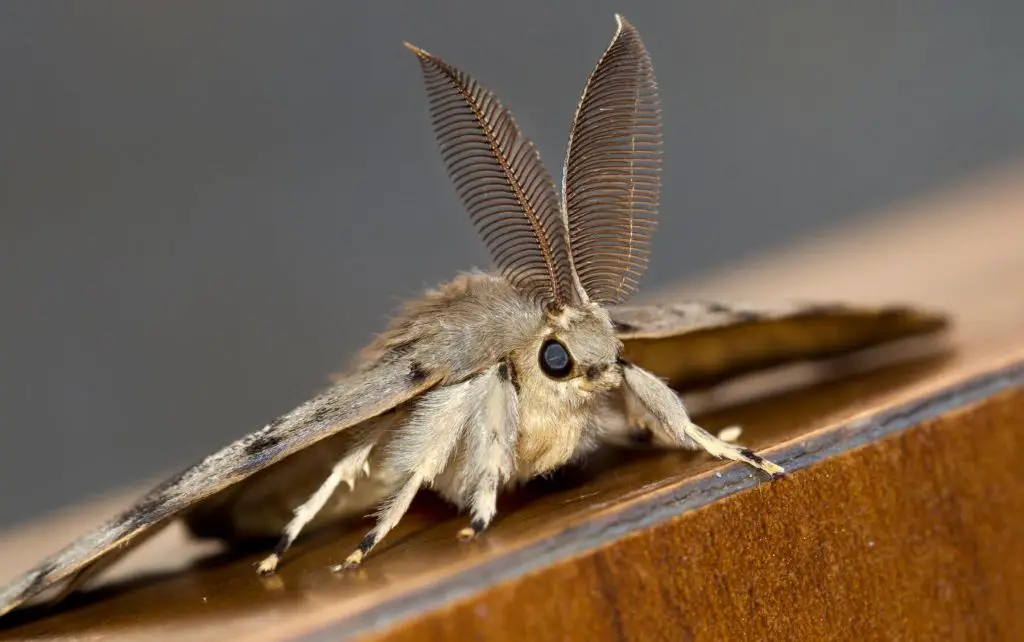Are Moths Dangerous?
Moths are a common pest that can be found in many homes. They can be difficult to get rid of, and they can damage your clothing and furniture, but are they actually dangerous?
Moths are often seen as nothing more than a nuisance, particularly when they find their way into our homes. We know they’re not dangerous to us in the sense that they can’t hurt us physically, but are there any other risks associated with these common insects? In this post, we’ll take a look at whether or not moths are dangerous to humans and whether or not you need to be concerned about them in your home.

Are moths dangerous to humans?
Moths have long been maligned as pests, but are they really dangerous to humans? Some people say that moths can cause diseases, while others maintain that moths are harmless. In order to find out once and for all whether or not moths are harmful to humans, it is important to look at the scientific evidence. We must always trust the science right?
The evidence overwhelmingly suggests that no, moths are not dangerous to humans.
To begin with, there is no evidence that moths can transmit diseases to humans. In fact, the only known way for a moth to theoretically transmit a disease would be if it were to bite a human, and let’s not forget the very important fact that moths don’t have mouths. Well not in the traditional sense. They have mouth parts but they don’t have teeth and couldn’t bite you even if they wanted to. And even then, if this was some undiscovered moth that actually has teeth and a taste for human flesh then the disease would likely be transmitted through the bite wound rather than through the moth itself.
Furthermore, there has never been a documented case of a moth transmitting a disease of any kind to a human.
Are moths poisonous?
Another common question people often have with regards to moths is whether or not they’re poisonous. There are many myths and misconceptions about moths. The most common one is that some moths are poisonous. This is simply not true. While there are a few moth species that can produce harmful toxins, such as the gypsy moth, that can cause health problems if their caterpillars are ingested by humans. However, the vast majority of moth species pose absolutely no threat to humans. In fact, many people consider moths to be beautiful creatures, and enjoy watching them flutter around in the night sky.
Do moths bite?
One of the first questions people often ask us about moths is whether or not they can bite. While it’s true that some moths like the vampire moth do have mouthparts that allow them to bite, similar to a mosquito, the vast majority of the species do not actually have the equipment to bite a human, they quite literally do not have mouths. Moths have mouthparts, and these are much too weak to penetrate human skin, so you don’t ever need to worry about them biting you.
The majority of experts will agree with this, that moths do not bite humans and that any perceived bites are likely caused by another type of insect.
What moths are dangerous?
Moths may seem like harmless creatures, and that is because they are. Well harmless to humans physically that is. Some moths as you well know can destroy your clothes and contaminate food items, thus causing a lot of economic damage if left unchecked and to get out of control.
Despite this “Moths are safe” blanket statement there are a few species of moth that could potentially be dangerous.
The most dangerous type of moth is the death’s head moth. This moth is native to Europe, but has spread to other parts of the world. The death’s head moth is dangerous because it contains a toxin that can cause paralysis and respiratory failure. Other moths that can be harmful include the Tiger Moth and the White Ermine Moth.
And lets not forget the most dangerous moth of all… Mothra

FAQs On The Dangers Of Moths
Are moths dangerous in houses?
I mean it really comes down to your definition of dangerous. But the short answer is no. Moths are a common pest that can be found in the home and can be a nuisance because they are attracted to light. While most moths aren’t harmful, some can damage fabrics and carpets or raid your food stocks. These moths would usually be the clothes moth or pantry moth which both produce extremely destructive larvae. It’s not ever really the moth itself that is the issue. It’s nearly always their offspring that do the real damage. Luckily there are a number of steps that can be taken to reduce the number of moths in your home.
What happens if a moth touches my skin?
If you’ve ever had a moth land on you, you may have wondered if there was any risk associated with it. The good news is that there is no risk of contracting any diseases from moths, even if their wings carry bacteria. The only thing you could possibly ever need to worry about is a minor allergic reaction. The agitation may cause a stinging, burning or itching sensation. But again this is going to be extremely rare. In fact, if you are actually allergic to moths we want to hear from you. Even if you are super sensitive, it is probably nothing that an antihistamine couldn’t fix. It’s highly unlikely to result in a trip to the emergency room anyway.
Is it OK to touch a moth?
It depends. Okay for you? Most likely. Okay for the moth? Much less likely. If we are talking about the common household moths you might find on your day to day, you will not have any issues touching them. Maybe you might get a bit of skin irritation, but you probably have more chances of winning the lottery. The moth however will not fare so well. They have delicate scales on their wings which will fall off when touched. Usually once touched the moth will no longer be able to fly and let’s face it a moth that can’t fly is not likely going to survive for too long. So, unless you are trying to kill it, it’s best to refrain from touching them.
Can moths make you sick?
In addition to touching your skin, some people worry that moths could make them sick by flying around them and causing them to breathe in bacteria. There is no evidence that this is actually the case, however. While it’s technically possible for bacteria from a moth’s wings to enter your body through your nose or mouth, it’s very unlikely that this would actually make you sick. Certainly no sicker than just breathing air. In short, there’s no need to worry about moths making you sick just by flying around you. Even if you made it a habit of eating large quantities of moths it’s realistically not going to make you sick.
Can you just leave moths in your house?
If you don’t mind having moths in your home, then theoretically there’s no need to get rid of them. However, if you’re concerned about them damaging your clothing or other items made from natural fibers then you probably do not want to allow it to get out of hand and you should take steps to protect your belongings. There really is nothing worse than pulling out your favorite cashmere jumper only to discover the thing is peppered in holes.
If you find that moths are becoming a nuisance, there are various methods you can use to get rid of them including traps and natural deterrents. Just be sure to follow all directions carefully when using any type of pesticide in order to avoid harming yourself or others in your home. You might also want to consult with a professional pest control company if the infestation is severe.
How to keep moths out of your home
It can be hard to stop moths from actually getting into your house. Leave a window open or a door cracked, and they will be straight in. Especially at night if you have left the lights on. However here are a few things that you can do to try and make your house less inviting to moths.
Keep doors and windows closed at night, especially if you have the lights on
Avoid bright garden lights near possible entry points, especially in the spring and summer months
Use natural moth-repellent sprays on natural fibers
Store fabrics, furs, and anything that they may want to eat in sealed plastic boxes. Bonus points if you add some cedar rings or lavender sachets
For anything that can’t be stored in plastic boxes just hang the cedar or sachets from the hangers
Cedar wardrobes or a chest of drawers will also do the trick
Generally, store stuff well in air-tight containers and use natural moth repellents and you will be fine.
If you do see a moth hanging around your clothes steam is your best friend
If you see moths hanging around your pantry, check all the foodstuff and then wipe down areas that you think the moth could have been in case it has laid eggs. Remember it is the larvae that are actually the problem. Moths don’t have actual mouths that can do any real damage.













